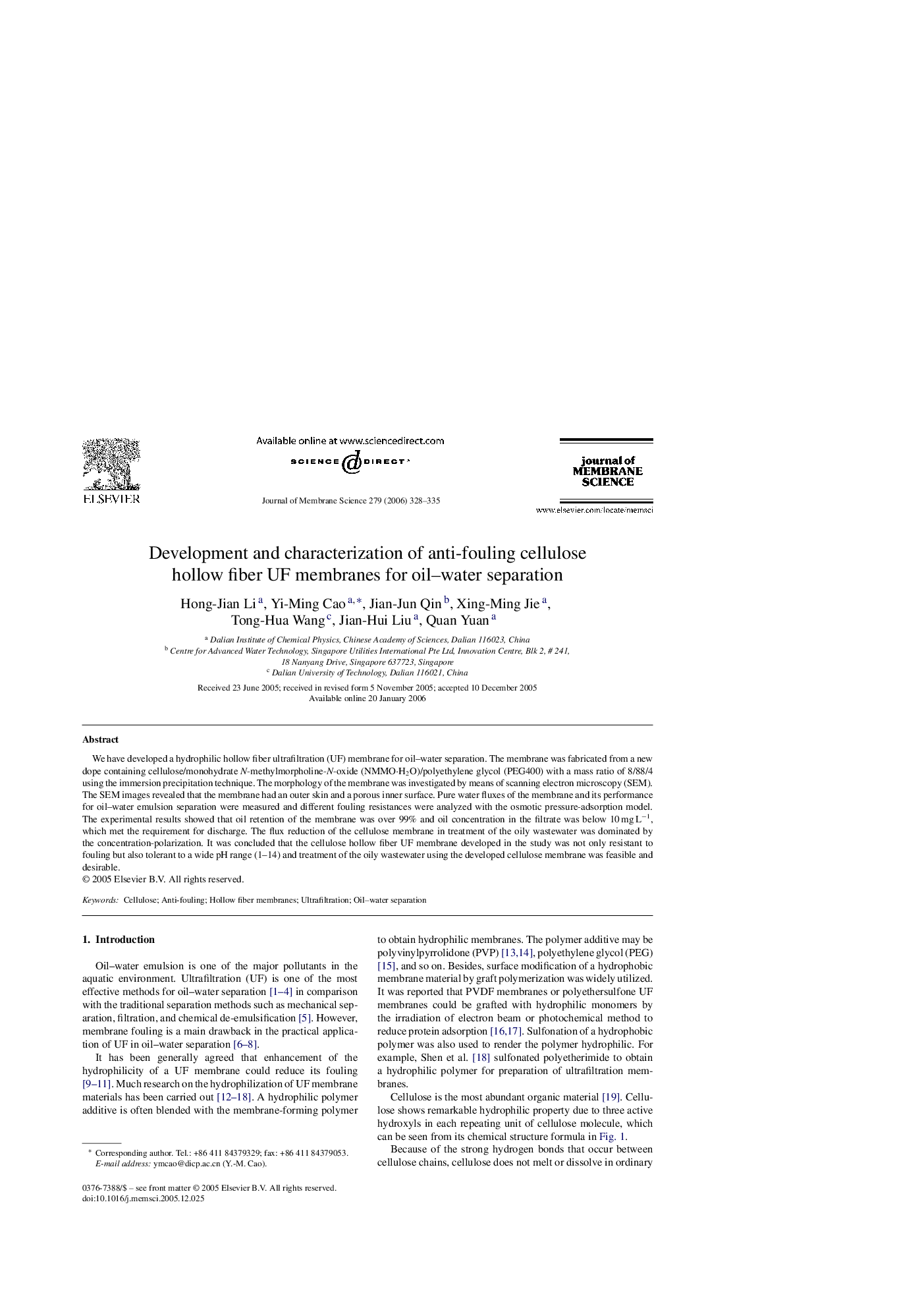| Article ID | Journal | Published Year | Pages | File Type |
|---|---|---|---|---|
| 639402 | Journal of Membrane Science | 2006 | 8 Pages |
We have developed a hydrophilic hollow fiber ultrafiltration (UF) membrane for oil–water separation. The membrane was fabricated from a new dope containing cellulose/monohydrate N-methylmorpholine-N-oxide (NMMO·H2O)/polyethylene glycol (PEG400) with a mass ratio of 8/88/4 using the immersion precipitation technique. The morphology of the membrane was investigated by means of scanning electron microscopy (SEM). The SEM images revealed that the membrane had an outer skin and a porous inner surface. Pure water fluxes of the membrane and its performance for oil–water emulsion separation were measured and different fouling resistances were analyzed with the osmotic pressure-adsorption model. The experimental results showed that oil retention of the membrane was over 99% and oil concentration in the filtrate was below 10 mg L−1, which met the requirement for discharge. The flux reduction of the cellulose membrane in treatment of the oily wastewater was dominated by the concentration-polarization. It was concluded that the cellulose hollow fiber UF membrane developed in the study was not only resistant to fouling but also tolerant to a wide pH range (1–14) and treatment of the oily wastewater using the developed cellulose membrane was feasible and desirable.
